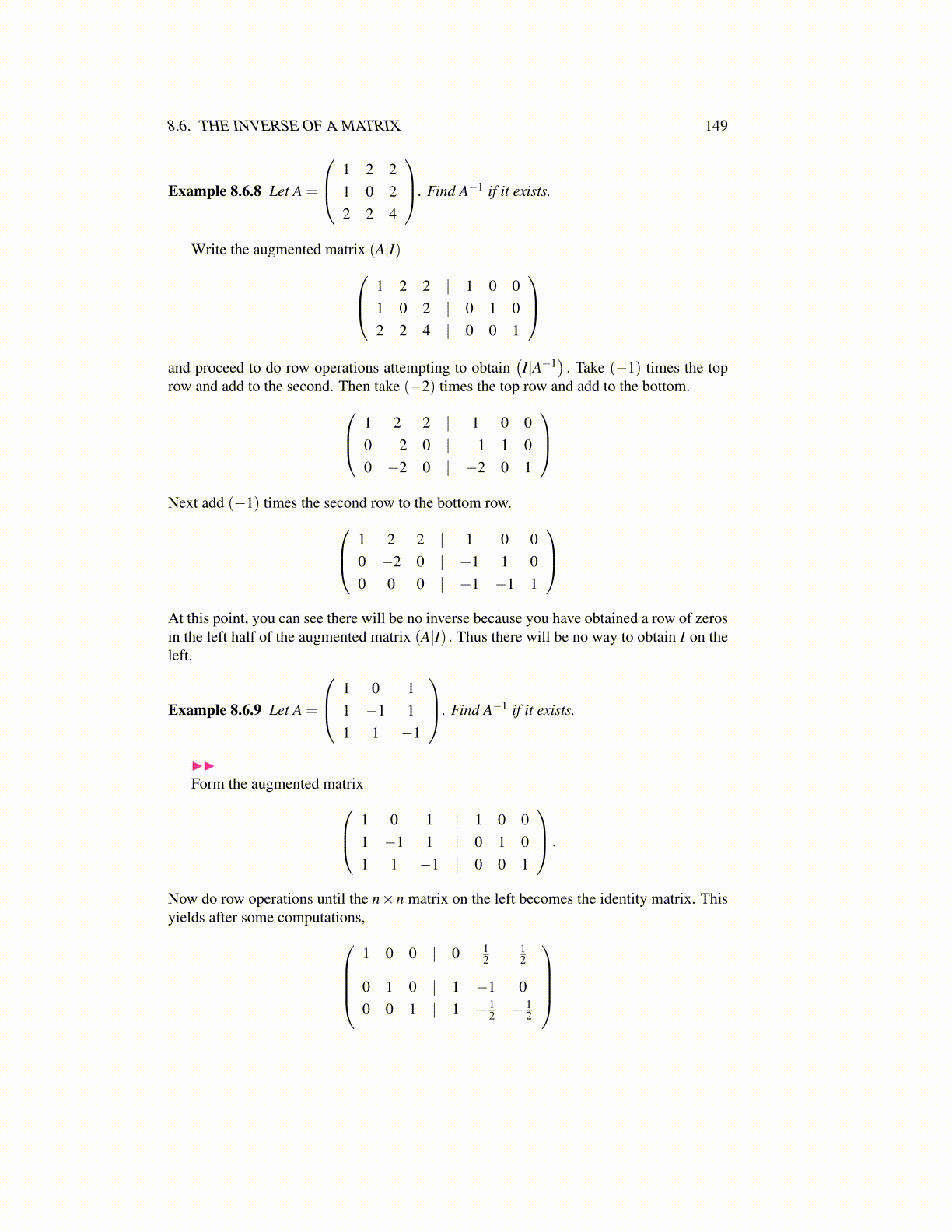
8.6. THE INVERSE OF A MATRIX 149
Example 8.6.8 Let A =
1 2 21 0 22 2 4
. Find A−1 if it exists.
Write the augmented matrix (A|I) 1 2 2 | 1 0 01 0 2 | 0 1 02 2 4 | 0 0 1
and proceed to do row operations attempting to obtain
(I|A−1
). Take (−1) times the top
row and add to the second. Then take (−2) times the top row and add to the bottom. 1 2 2 | 1 0 00 −2 0 | −1 1 00 −2 0 | −2 0 1
Next add (−1) times the second row to the bottom row. 1 2 2 | 1 0 0
0 −2 0 | −1 1 00 0 0 | −1 −1 1
At this point, you can see there will be no inverse because you have obtained a row of zerosin the left half of the augmented matrix (A|I) . Thus there will be no way to obtain I on theleft.
Example 8.6.9 Let A =
1 0 11 −1 11 1 −1
. Find A−1 if it exists.
▶▶Form the augmented matrix 1 0 1 | 1 0 0
1 −1 1 | 0 1 01 1 −1 | 0 0 1
.
Now do row operations until the n×n matrix on the left becomes the identity matrix. Thisyields after some computations,
1 0 0 | 0 12
12
0 1 0 | 1 −1 00 0 1 | 1 − 1
2 − 12